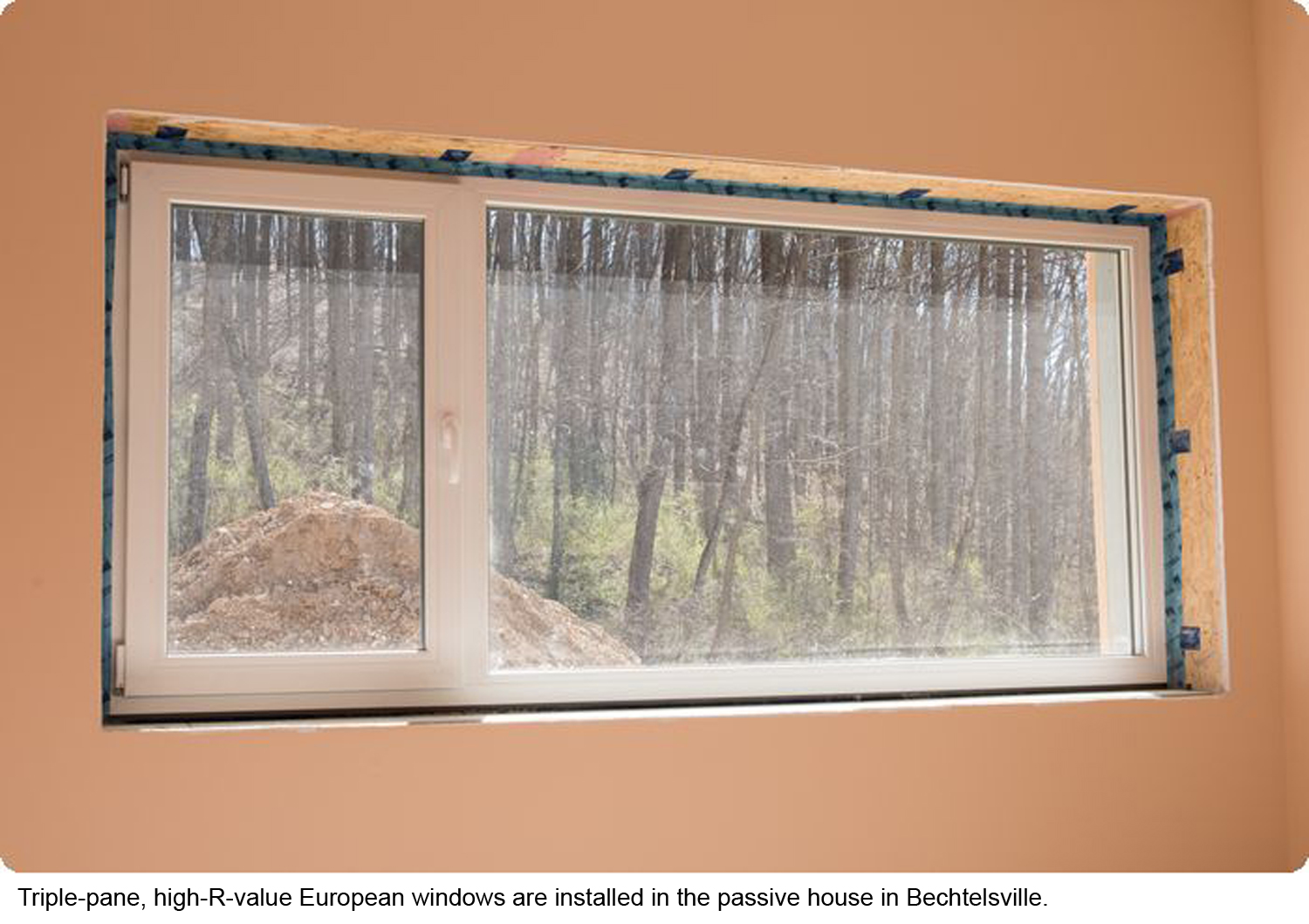News
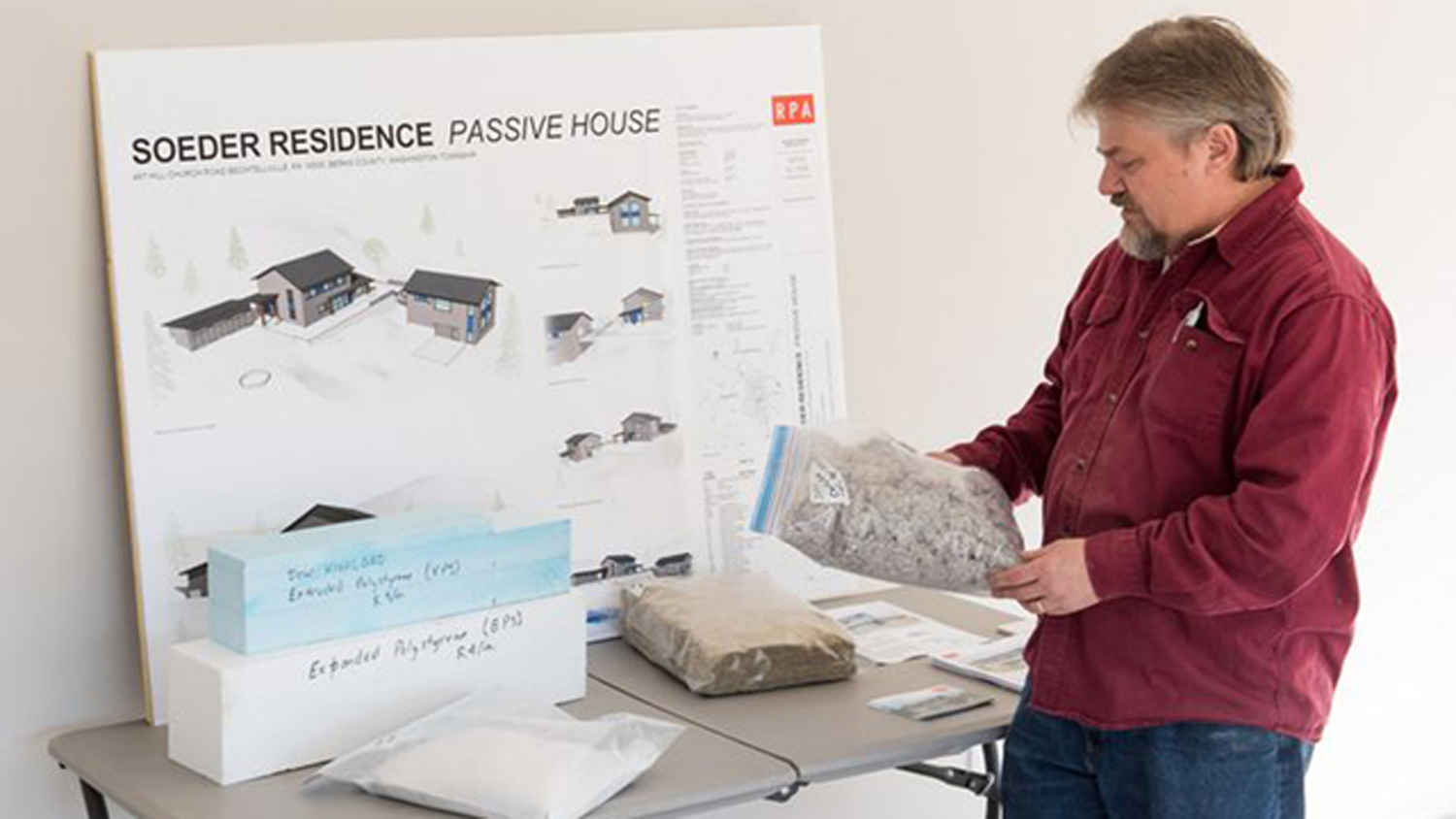
This Construction is Actively Efficient
Earth Day will be celebrated 365 days a year by JeanAnn and Shawn Soeder, when construction of their Washington Township passive house is completed in June.
The couple’s home was part of an April 22 seven-location, self-guided tour of solar buildings in Berks and Lehigh counties.
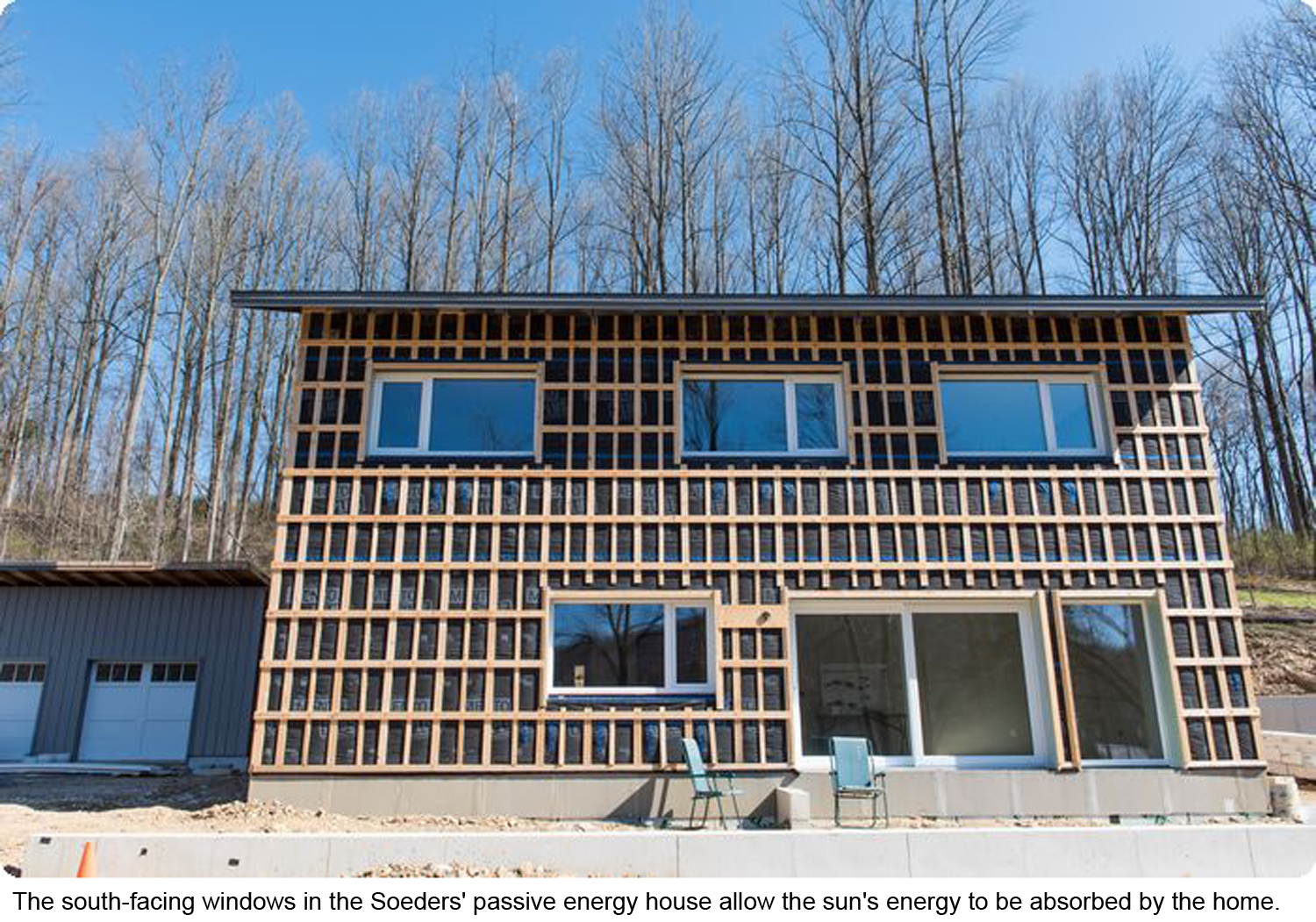
The informal open house tours sponsored by the MidAtlantic Renewable Energy Association, a nonprofit organization in Upper Macungie Township, were hosted by business and home owners.
The organization sponsors workshops and produces publications to inform and educate the public on renewable energy production, energy efficiency and sustainable living.
“Even on days when it was 19 degrees outside this winter, it was still 60 degrees inside with no heating system,” said Shawn Soeder. He said his home is designed with 9,000 BTU-each supplemental heating and cooling systems.
“By far, the biggest user of energy in a passive house are plug-ins,” said Richard Pedranti, the architect for the Soeder passive house.
He said that typical heating and cooling costs are about $200 a year for a passive house, as compared to $2,000 to $3,000 for traditional homes.
“It’s estimated that owners of passive houses will typically use about $700 a year for plug-ins, but people who are interested in the houses are preprogrammed to save energy and may use less,” said Pedranti.
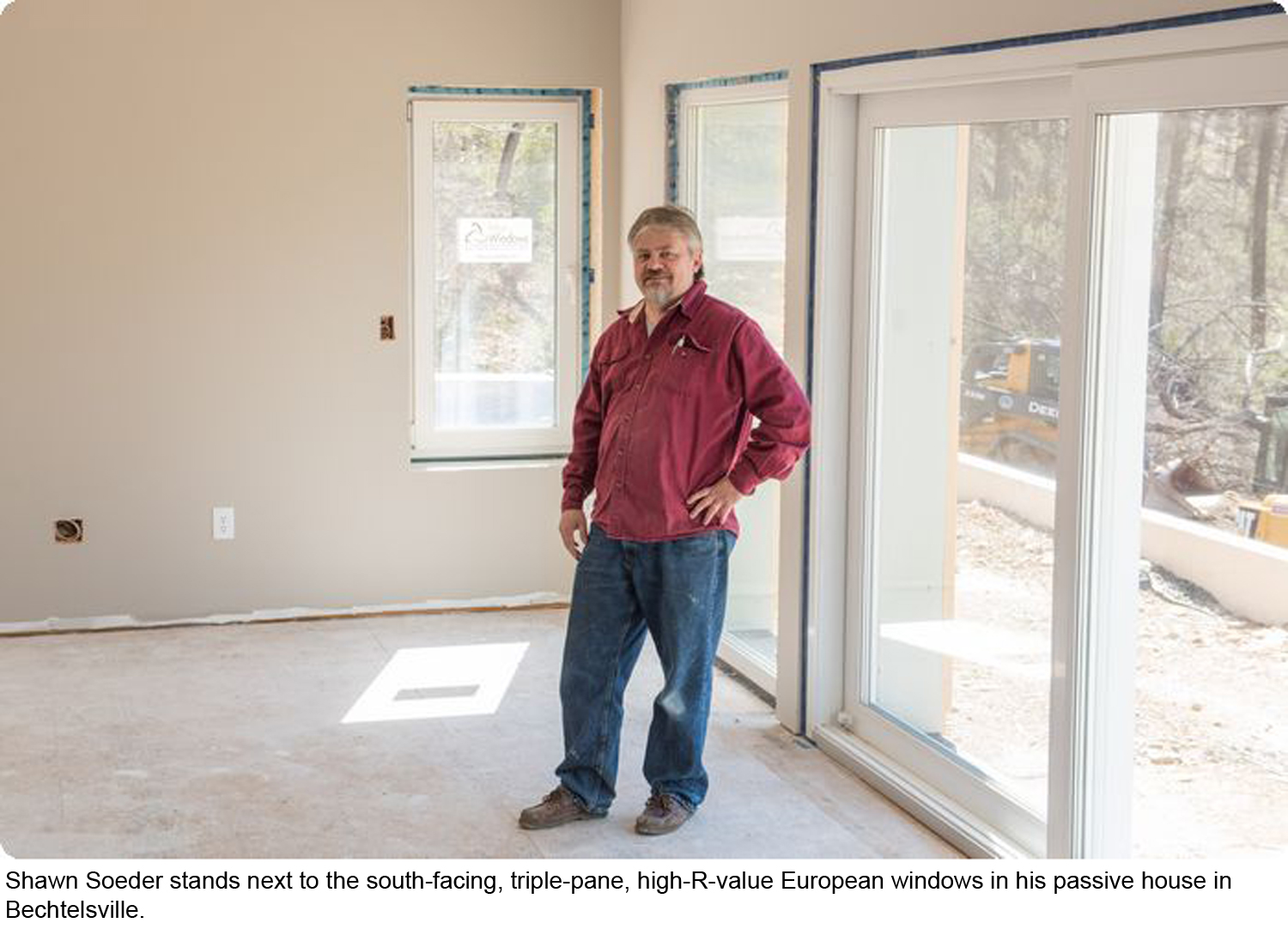
The 2,400-square-foot two-story home has some finishing touches to complete before June, and Soeder wanted visitors to get a better look at the mechanicals while the house is still under construction.
Conserves energy
With active energy design, purchased energy such as electricity and natural gas are limited to save energy. However, the passive-energy approach conserves energy by creating a virtually airtight, super-insulated, compact building enclosure that uses the sun and heat emanating from people and equipment to achieve a comfortable indoor environment.
The Soeder home is equipped with European triple-pane windows in an airtight enclosure with continuous ventilation, and double-wall construction with extremely high levels of insulation.
The home is designed to use an energy recovery ventilation system to insure a continuous supply of filtered and conditioned fresh air. With all of its features, passive house design offers benefits in personal health and comfort, energy efficiency and affordability.
Construction experts believe a passive house is today’s most energy-efficient building standard.
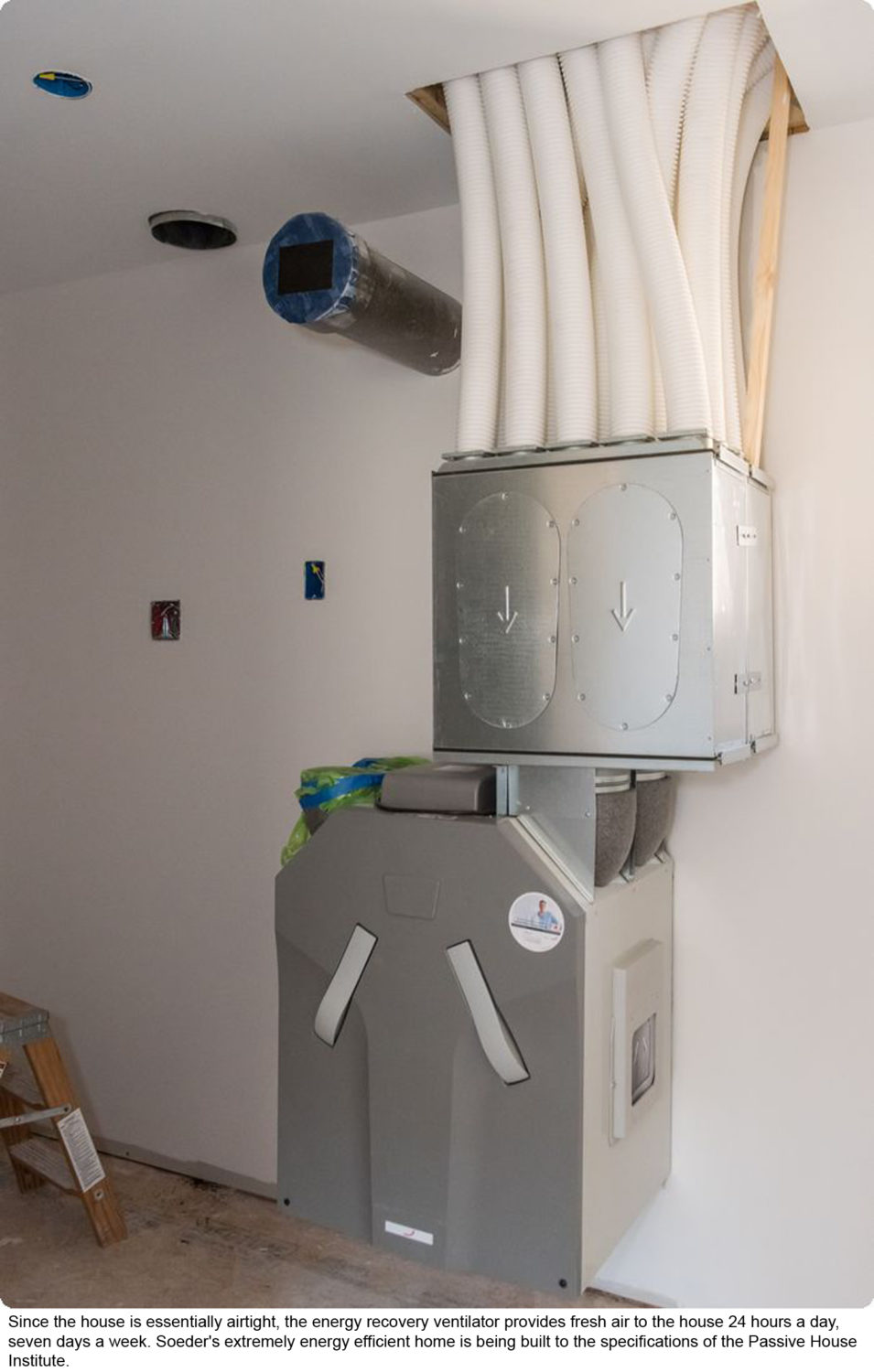
Buildings that meet the passive house standard use 80 percent less energy for heating and cooling than conventional buildings, yet are noticeably more comfortable and healthy than traditional buildings.
Modern approach
Soeder said people have a misconception that passive solar means using a “mass-and-glass” approach. His home does have a lot of glass, but its design is based on a modern passive solar approach which doesn’t require a lot of thermal mass to store energy.
The first consideration in the design of a passive house is site selection. A portion of the south side of the house must have an unobstructed view of the sun. It is important to consider possible future development and if zoning and land use regulations protect the home’s access to the sun.
According to Soeder, the couple will not have to worry about future development blocking their view of the sun, “unless they build a skyscraper,” he said.
The home is situated on a hill on the front portion of a 10-plus-acre lot, and is 50 feet above the road.
Sustainable Energy Fund CEO and President John Costlow, who worked with Pedranti to highlight the project on the tour, said there are no government grants for private homeowners to build passive houses.
“The funding is on the commercial end,” he said.
The payoff is in the energy and financial savings, said Costlow.
Sustainable Energy Fund of Allentown is a nonprofit organization that provides financing for energy-related projects for commercial, industrial, municipal, agricultural, school districts and nonprofit entities with a geographic focus in Pennsylvania.


